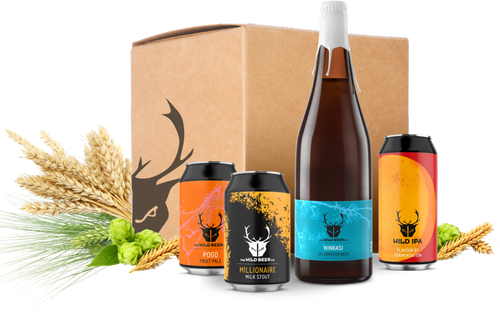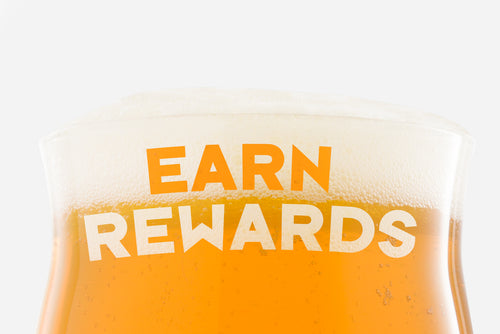Enso - How we made beer using yeast from a wasp
30/09/2022In celebration of our 10th Birthday, we wanted to create a unique collection of beers - beers which pay homage to our past brews and those which look to the future. Enso is a beer that does a bit of both, looking back at our love for e unusual yeast cultures and spontaneous fermentation whilst establishing new methods which provide a new world of possibilities for our future creations.
For the majority of breweries, wild yeast is an unpredictable enemy. Its very presence is reason enough to dump whole tanks of beer or launch costly recalls. Wild yeast is a microbial contaminant, to be prevented through rigorous cleaning regimes and completely eradicated if ever discovered. Yeast purity is maintained by purchasing supplies from a small number of global laboratories, backed by meticulous testing regimes and reassuring documentation. Only a few intrepid breweries invite wild yeast and bacterial cultures through their doors, putting them to work in their barrel ageing and spontaneous fermentation programmes. Here, local microbes are free to produce unique and unusual flavours, which are both a product of their time and environment. Such beers are prized for their complexity and vintage - but mixed, wild cultures are unpredictable and unreliable beasts. No two batches will ferment in the same way or produce beers which taste identical. Inevitably some will spoil and others will require years to fully mature.

Modus Operandi is the beer that started our brewery, bringing together barrel nuances and wild yeast fermentation. It has been in continual production since we began brewing 10 years ago and speaks of our commitment to alternative fermentations and unorthodox yeasts which deliver remarkable flavour by nature.
Compared to their wild cousins, pure, lab-grown yeast strains are reliable, efficient and (in most cases) impart little unique character to their beers. As such, the volume of beer fermented with pure, lab-grown yeast strains vastly exceeds that made with mixed, local cultures. Despite this, it is arguable that it is the pure yeasts which are the novelty.

The first evidence of a fermented alcoholic drink dates to around 7000 BCE, but our understanding of the role of yeast in fermentation has a much shorter history. Before the discovery of yeast in the 1800s, fermentation was thought to be an act of God or magic. Unbeknownst to early brewers, their sugary liquids were inoculated by wild yeasts in the environment - from fermentation vessels left open to the air, the addition of fruits or honey, or through the use of yeast-contaminated vessels or special stirring spoons. Early brewers learned that inoculating their wort (unfermented beer) with a small portion of fermented beer resulted in fast and more predictable fermentation. This continuous “backslopping” within man-made environments, resulted in domesticated yeast lineages which lost contact with their natural niches. At this time (prior to industrialisation), there existed a huge diversity within brewing yeasts, with individual mixed strains being maintained by individual breweries and even households. It is only within the last 138 years that we have been fermenting with a relatively small number of single-strain yeast cultures. If we condense brewing history down to 24 hours, we only started brewing with single strain yeasts at 22 minutes to midnight.
The lineage of these pure yeast cultures can be traced back to a small number of ancestors at the very tip of a branch on the yeast family tree. Huge numbers of other yeast strains exist, many of which are yet to be discovered. The potential of these yeasts in fermentation is unknown and their unique flavours and aromas are untapped. It appears that once brewers found a few good yeast strains over a century ago, they stopped looking for better or more interesting ones.
Through 10 years of experience in mixed culture and spontaneous fermentation, we have a taste of the amazing variety and potential of wild yeast strains. Until recently, however, we have been unable to separate these into pure cultures. By adapting the methods used by Emil Christian Hansen to create the first pure yeast culture in 1883, we can find and use new branches in the family tree and experience different flavours and aromas. In isolation, these strains deliver more consistent results, allowing trials to perfectly pair the yeast with other ingredients in the brew.
After 5 years of research and developing the lab skills needed for this project, our search for a pure wild yeast strain began on a cold, wet day in December 2021. Like us, yeast needs warmth and food to grow, both of which were now scarce. So where to look? Whilst brewing yeasts have been studied in great depth for many years, little is known about their lifecycles in nature. One answer to the question of how yeast survives winter comes from Irene Stefanini and her team at the University of Turin. Irene demonstrated that yeasts overwintered in the guts of hibernating wasps and were reintroduced by them in the spring as they returned to forage in the wild. Our wintertime search had a focus and after a few weeks, had ourselves a handful of dead wasps and an abandoned wasps’ nest.

Over the course of 5 months, a number of individual yeast strains were isolated and propagated from these samples. Each isolated strain was unique in fermentability and flavour, attributes which were not replicated within our other samples. Whilst each strain was an irreplaceable find, unique to the time and place of its original capture, the majority were unsuitable for brewing. Despite the carefully planned scientific processes, discovering the right yeast remained a chance find – a needle in a haystack.
We were fortunate. The yeast from the abandoned wasps’ nest imparted a sweet, honey-like character to our test batches which fermented reliably without off-flavours. Through further trials, aimed at accentuating the yeast's natural flavours, we created Enso – our first pure, wild yeast fermented beer. Enso pairs the yeast’s honey flavour with in-season apricots and British hops in a delicate 6% ABV wild ale.

We are now looking at other uses for this particular yeast strain, trialling it both within our current product range and in new beer development. Whilst we feel this first brew has been perfected, each new yeast presents us with more opportunities to experiment and continue to learn and grow.
The processes required to harvest, isolate and propagate a pure wild yeast strain have primarily been the preserve of university research teams and global yeast laboratories. Through this project, we have brought these skills and methods in-house and a new world of flavours is now open for us.
We are currently seeking opportunities and collaboration partners that will allow us to discover and isolate more unique yeast strains, each imparting unique flavours, evoking the place and time of their origins through the magic of fermentation.
You can order your bottle of Enso and our 9 other 10th Birthday beers here: Wild Beer Co 10th Birthday Box






